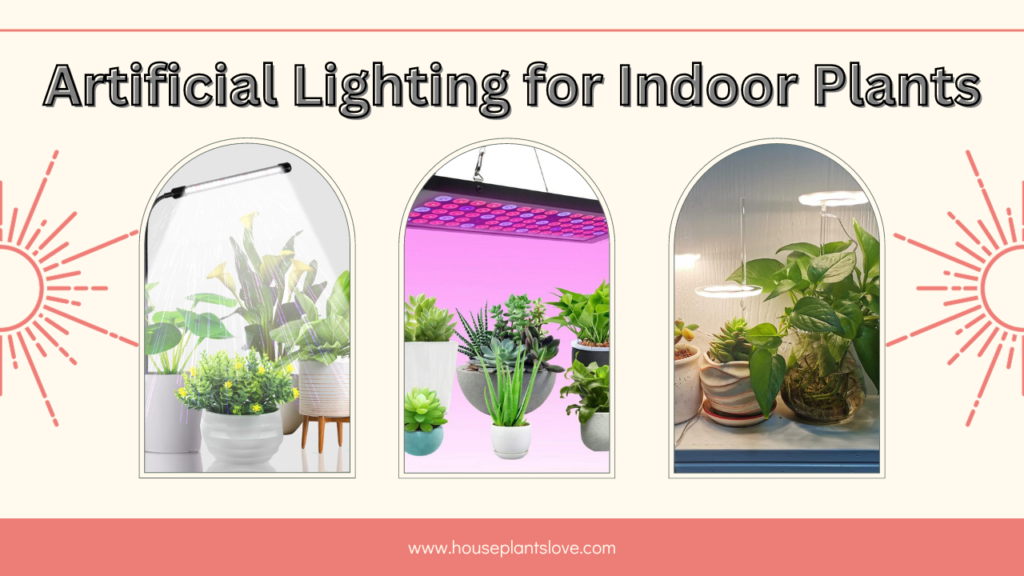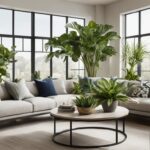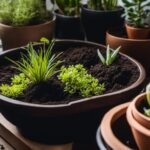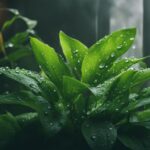Grow Lights for HousPlants, Artificial Lighting for Indoor Plants
In the past, professional growers were the main users of advanced lighting systems to nurture plants. However, today, these systems have become accessible for home and greenhouse use, providing an affordable and user-friendly option for anyone interested in experimenting with indoor plant cultivation under artificial lighting. In this guide, we’ll about it.
You can also read 7 houseplants to remove mould, mildew, and condensation

Why Use Artificial Lighting for Indoor Plants
Artificial lighting offers several advantages for plant growth in various scenarios:
- Enhanced Light Levels: For plants that require higher light intensities than what natural indoor light provides, especially during the short winter days in regions like the UK.
- Early Seed Starting: Artificial lighting allows you to start seedlings earlier in the year, giving you stronger and more advanced young plants to transplant in spring, without waiting for natural light levels to increase.
- Dark or Windowless Spaces: It’s perfect for growing plants in dark corners or windowless areas, where natural light is insufficient.
- Decorative Features: Artificial lighting can be used to create decorative features in your home, like illuminating a terrarium filled with lush foliage plants.
You can also read 9 New Essential Houseplant Care Tips for Thriving Indoor Plants
Types of Artificial Lights for Home Use For Houseplants
There are four primary types of artificial lights that can be used for houseplants: incandescent, fluorescent, high-intensity discharge (HID), and light-emitting diode (LED).
Incandescent Bulbs for Houseplants
Incandescent bulbs are the least expensive and most common type of light bulb, but they are also the least energy-efficient and produce the least amount of light that is useful for plant growth. Incandescent bulbs emit more heat than light, which can scorch plants if they are placed too close.
Fluorescent Bulbs For Indoor Plants
Fluorescent bulbs are more energy-efficient than incandescent bulbs and produce more light that is useful for plant growth. However, they can still produce a fair amount of heat. Fluorescent bulbs come in a variety of colors, but for houseplants, it is best to choose a “full-spectrum” bulb that produces a range of colors, including red, blue, and green.
LED (Light Emitting Diode) Lighting for Houseplants
LED lights are the most energy-efficient type of artificial light and produce a lot of light that is useful for plant growth. LED lights also produce very little heat, so they can be placed close to the plants. LED lights are available in a variety of colors, but for houseplants, it is best to choose a “full-spectrum” bulb that produces a range of colors, including red, blue, and green.
HID (High-Intensity Discharge) Lights for indoor plants
HID lights are very energy-efficient and produce a lot of light, but they are also the most expensive type of artificial light. HID lights produce a lot of heat, so they need to be placed well above the plants. HID lights are often used in commercial greenhouses, but they can also be used for home use, especially for growing large or demanding plants.
You can read in detail about Best Grow Lights for Indoor Plants of 2023
How to Use Artificial Lights at Home
For successful indoor plant cultivation, it’s crucial to understand that plants primarily absorb blue and red light for growth and flowering. Blue light stimulates growth, while red light is essential for both growth and flower production. Here are some guidelines for using artificial lights:
Simple Lighting System
- A basic setup for home use can involve a unit with two 60cm (2ft) T5 HO fluorescent tubes, suspended approximately 60cm above your plants. This works well for small groups of houseplants or crops like leaf salads.
- Keep the lights on for around 16 hours a day.
- Monitor the foliage color as an indicator of light sufficiency and adjust light intensity as needed.
Seedlings
- Seedlings benefit from predominantly blue light for optimal growth and compactness. Position T5 HO tubes about 60cm (2ft) above the seedlings and maintain a 16-hour daily light cycle.
Plant Collections
- Plants like Phalaenopsis orchids and African violets can thrive under artificial lighting. Aim for mid-green foliage.
- Use an aquarium tank as a terrarium to create a decorative focal point while maintaining the high humidity these plants prefer.
Different Plant Types
- Each plant type may have specific lighting requirements for growth and flowering. Research the lighting needs of your chosen plants and ensure your lighting system provides the necessary intensity and quality of light using a quantum light meter.
Common Issues Artificial Lighting for Indoor Plants
- Too Much Light: If your seedlings appear bleached or stunted, or if your plants exhibit yellow-green foliage closest to the lights, reduce light intensity by adjusting the number of tubes, increasing the distance between lights and plants, or shortening the daily light duration (photoperiod).
- Too Little Light: Dark green foliage and poor plant growth indicate insufficient light. Correct this by moving plants closer to the lights, extending the daily light duration, or adding more tubes.
- Imbalanced Light (Too Much Blue or Red): Adjust the balance of blue and red tubes to address issues like stunted growth or elongated stems caused by excessive blue or red light. Balancing the colors will promote healthy plant development.
Artificial lighting can be a valuable tool for growing plants indoors, extending the growing season, and adding a touch of greenery to your home. By selecting the right lighting system and understanding your plants’ needs, you can embark on a successful indoor gardening journey.




